Northern California is a birdwatcher’s paradise. With its diverse habitats ranging from mountains, forests, wetlands, and coastal areas, Northern California offers an array of avian species.
From the majestic Golden Eagle to the tiny Anna’s Hummingbird, Northern California is home to over 500 species of birds.
Its mild climate, seasonal migration patterns, and abundant food sources provide ample opportunities to observe these feathered creatures in their natural habitats.
Whether you are an avid birder or just looking for a unique outdoor experience, the Northern California birdlife will captivate your imagination.
11 Birds Commonly Found In Northern California
Northern California is home to a diverse range of bird species due to its varied habitats, including forests, wetlands, coastlines, and mountains. Here are 11 birds commonly found in Northern California:
1. Mountain Bluebird
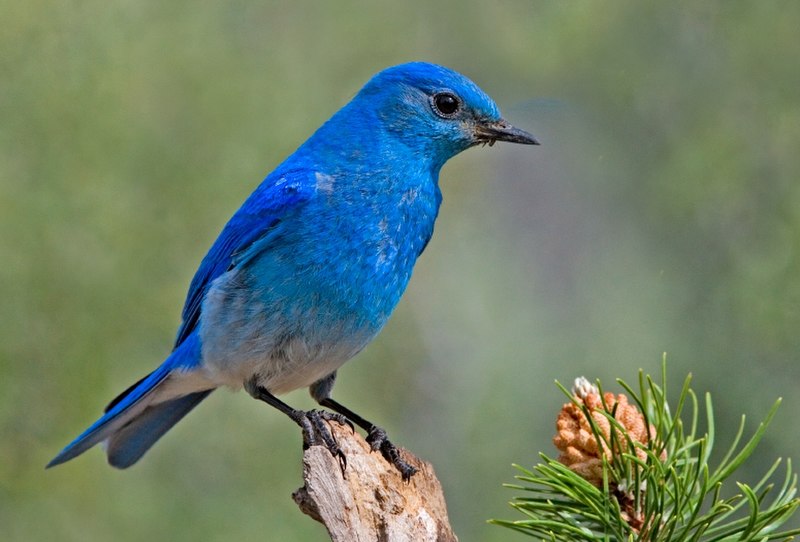
The Mountain Bluebird is a beautiful sight to behold. It has bright turquoise-blue wings and tail, with a light underbelly, grey crown and breast, black eyes and thin bills.
During the fall season, its plumage changes slightly – females have duller blue wings and tails and grey throats and backs.
As they migrate across western North America during springtime, these birds can be found in mountainous districts where they feed on insects such as grasshoppers or crickets collected from meadows or fields of grain.
They also enjoy eating berries when available. Through its stunning colours, this species adds vibrancy to any landscape it traverses – truly an incredible creature of nature.
Scientific classification:
| Kingdom | Animalia |
| Phylum | Chordata |
| Class | Aves |
| Order | Passeriformes |
| Family | Turdidae |
| Genus | Sialia |
| Species | S. currucoides |
Also Featured In: Most Common United States Birds, Birds That Live in Colorado
2. White-Breasted Nuthatch

The White-breasted Nuthatch is a medium-sized bird belonging to the nuthatch family Sittidae. It measures around 15.5 cm in length, and its colour varies throughout its range.
Males have a light blue-grey upperpart, with a black crown and nape, whereas females have a dark grey crown instead of a black one.
The underparts are whitish, with reddish tinge on sides and flanks while the bill is short and stout with pale base near eyes which can be yellow or white depending upon geographic location..
This species feeds mainly on insects but will also eat seeds, nuts and berries when available.
They prefer open woodlands where they often climb trees searching for food along trunks and branches underneath bark crevices, creating their nest there, too.
Scientific classification:
| Kingdom | Animalia |
| Phylum | Chordata |
| Class | Aves |
| Order | Passeriformes |
| Family | Sittidae |
| Genus | Sitta |
| Species | S. carolinensis |
Also Featured In: Most Common Winter Birds, New Hampshire Birds You Should Know
3. Anna’s Hummingbird
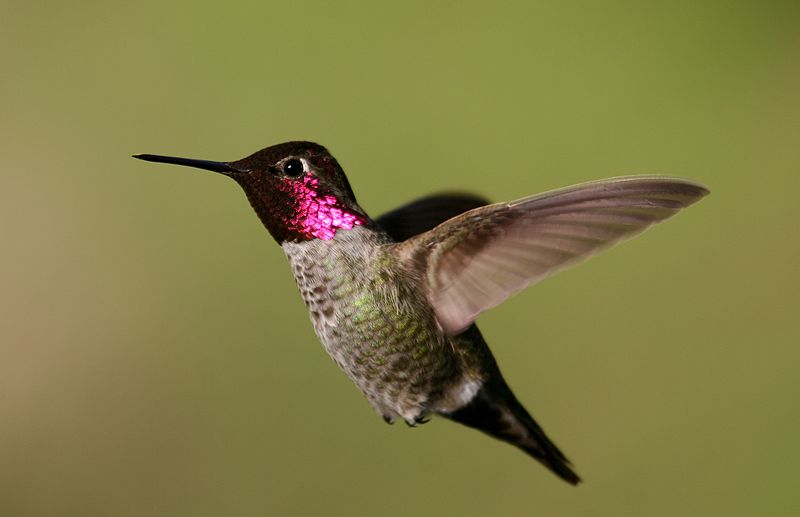
Anna’s hummingbird is a beautiful species of bird belonging to the Trochilidae family. Native to western coastal regions of North America, it was named after Anna Masséna, Duchess of Rivoli.
In the early 20th century, these birds bred only in northern Baja California and southern California, but due to ornamental plant transplanting, they can now be found across much of the Pacific Coast region.
They are medium-sized with bright emerald green feathers on their back and crowns as well as rose-red patches at the throat for males, making them quite distinguishable from other birds.
Their diet consists mainly of nectar from flowers, although they will occasionally feed on insects or spiders, making them important pollinators that help maintain healthy ecosystems.
Scientific classification:
| Kingdom | Animalia |
| Phylum | Chordata |
| Class | Aves |
| Order | Apodiformes |
| Family | Trochilidae |
| Genus | Calypte |
| Species | C. anna |
Also Featured In: British Columbian Birds, Orange County Birds You Need to See
4. Red-Winged Blackbird

The red-winged blackbird is a beautiful bird found in most of North America and Central America.
Its distinct features include a glossy black body, with white shoulder patches and bright red wing coverts year round.
It prefers wetland habitats such as marshes, ponds, lakeshores and agricultural fields. During breeding season, they inhabit grassy areas near water, then move south for the winter months.
For food, they mainly eat insects but also consume wild fruit or grains.
They are very social birds, often seen in large flocks during migration times when their unmistakable “conk-la-ree” call can be heard echoing across the sky.
Scientific classification:
| Kingdom | Animalia |
| Phylum | Chordata |
| Class | Aves |
| Order | Passeriformes |
| Family | Icteridae |
| Genus | Agelaius |
| Species | A. phoeniceus |
Also Featured In: Flocks Birds around Us, Summer Birds that Live around Us
5. Black Phoebe
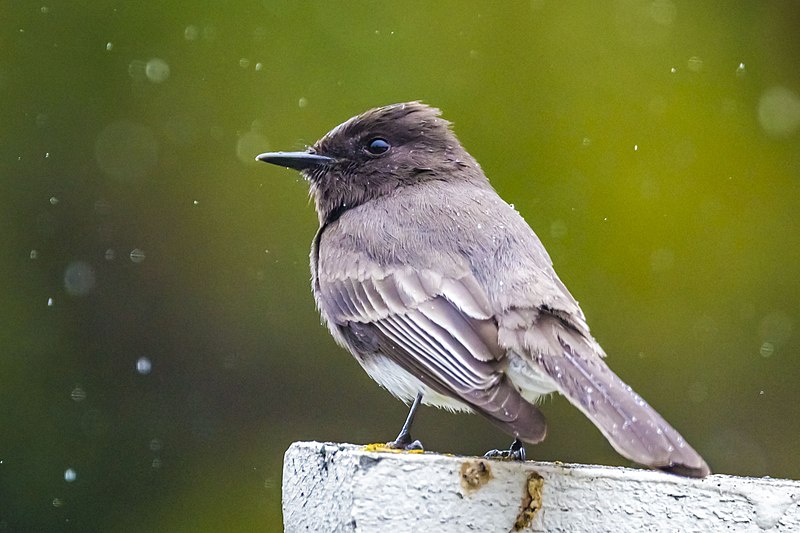
The black phoebe is a beautiful passerine bird belonging to the tyrant-flycatcher family. It breeds from southwest Oregon and California south through Central and South America, where it can be found year-round.
However, its northern populations tend to migrate seasonally in some areas. Six subspecies of this species have been identified so far: two are occasional visitors, while the others are more common residents in their range.
The adult has mainly dark grey upperparts with a white belly; juveniles may show brownish tones instead of grey ones on their back.
Its main diet consists of insects which it catches by hovering over water or flying out after them from perches near rivers or streams – hence why they’re often seen around these places.
Scientific classification:
| Kingdom | Animalia |
| Phylum | Chordata |
| Class | Aves |
| Order | Passeriformes |
| Family | Tyrannidae |
| Genus | Sayornis |
| Species | S. nigricans |
Also Featured In: Flycatchers Species, Birds Live Near San Diego
6. Double-Crested Cormorant

The double-crested cormorant is a majestic bird with an impressive wingspan, found across North America from the Aleutian Islands all the way down to Mexico.
Its black plumage stands out against its bright orange-yellow facial skin and some extended patches of white feathers on each side of its throat.
It measures 28 – 35 inches in length and has webbed feet that enable it to swim gracefully through rivers, lakes, and coastal areas.
These birds are known for their voracious appetite for fish, sometimes diving over 100 ft deep into water looking for food.
Despite this reputation, they also feed on crustaceans, amphibians, and insects when they are available.
Cormorants have been part of many cultures throughout history due to their remarkable ability to fly long distances, making them valued messengers or companions during fishing expeditions at sea.
Scientific classification:
| Kingdom | Animalia |
| Phylum | Chordata |
| Class | Aves |
| Order | Suliformes |
| Family | Phalacrocoracidae |
| Genus | Nannopterum |
| Species | N. auritum |
Also Featured In: Cormorant Species, Water Birds Live around Us
7. Tree Swallow
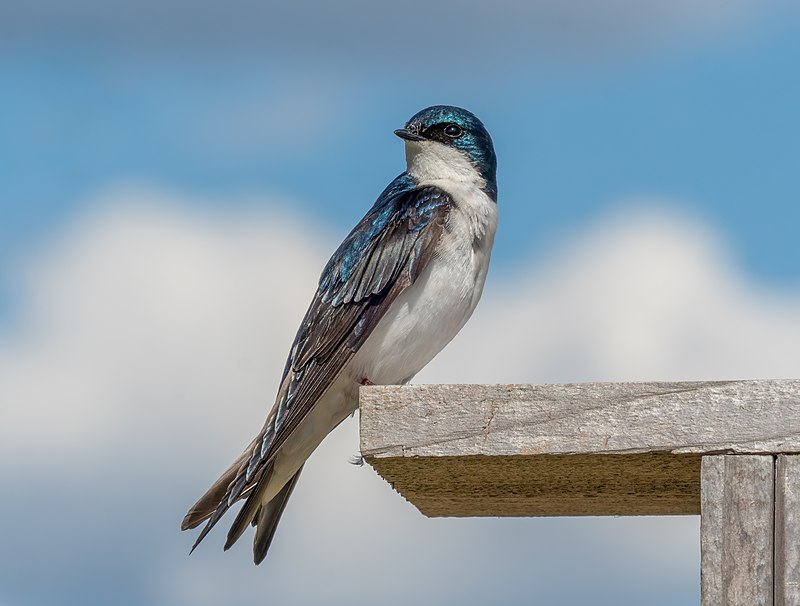
The Tree Swallow is a migratory bird of the Hirundinidae family, first described by French ornithologist Louis Vieillot in 1807. It has glossy blue-green upperparts and white underparts with iridescent violet on its throat and breast.
Its wings are blackish above with pale grey below, while its tail feathers are blackish-blue with white edges.
During the breeding season, they build cup-shaped nests out of grasses or twigs, which are lined with animal hair or fur found near their nesting sites.
They feed mainly on insects such as flies and beetles that they catch while flying over fields or water surfaces during summer months when food is abundant for them to survive migration back southward in the wintertime.
The tree swallow is an important part of our environment both aesthetically and ecologically due to its insectivorous diet helping keep pest populations low in certain areas where agricultural crops may otherwise be damaged without these birds around.
Scientific classification:
| Kingdom | Animalia |
| Phylum | Chordata |
| Class | Aves |
| Order | Passeriformes |
| Family | Hirundinidae |
| Genus | Tachycineta |
| Species | T. bicolor |
Also Featured In: Swallows Species, Blue Birds You’ll Found around Us
8. Western Bluebird
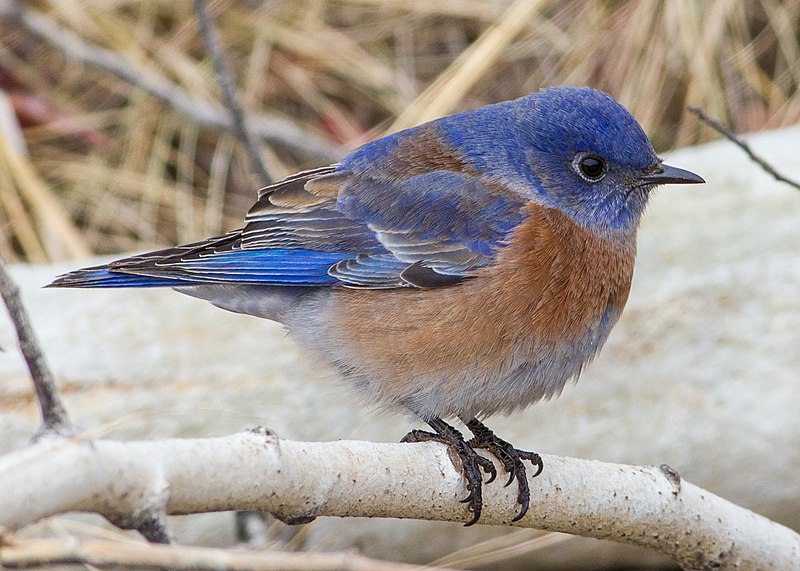
The Western Bluebird is a small North American thrush that was formally described by English naturalist William John Swainson in 1832.
It has six subspecies and measures 15 to 18 cm long, with the adult male being bright blue on top and light orange-brown underneath.
Its wings have white bars which contrast against its bright plumage. The female is duller overall but retains the same wing pattern as its counterpart.
In addition, it also sports an attractive reddish patch near its bill area when breeding season arrives.
This species can be found inhabiting open woodlands, grassy meadows or agricultural areas of western America from Alaska southwards into Mexico and Guatemala, where they feed mainly on insects such as beetles, flies, ants, etc.
Scientific classification:
| Kingdom | Animalia |
| Phylum | Chordata |
| Class | Aves |
| Order | Passeriformes |
| Family | Turdidae |
| Genus | Sialia |
| Species | S. mexicana |
Also Featured In: Thrush Species, Common Southern Californian Birds
9. Brewer’s Blackbird
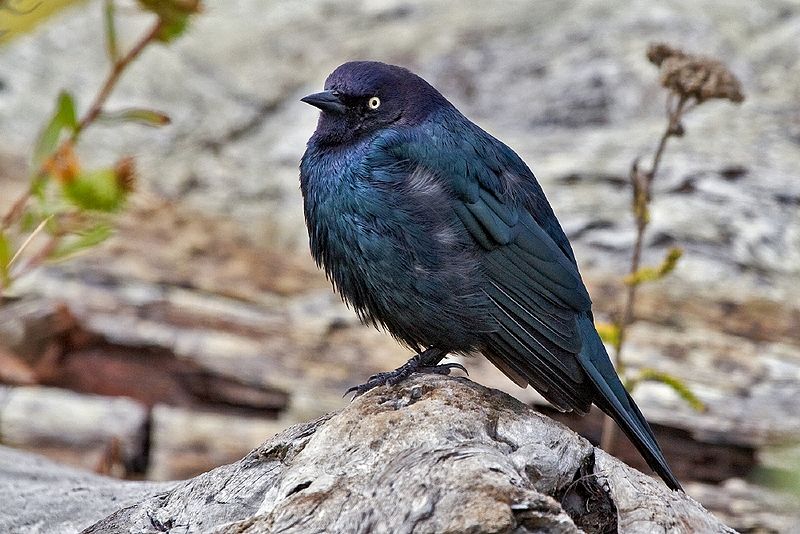
Brewer’s blackbird is a medium-sized New World bird that can be easily identified by its glossy, iridescent purple head and neck.
The male’s body has bluish-green highlights, while females have brownish-grey plumage with slight hints of the male’s iridescence.
Both sexes possess bright yellow eyes, black feet and legs, and dark wings. Brewer’s blackbirds are commonly found in open grasslands or shrubland habitats.
They prefer to eat insects but will also feed on grains such as wheat or corn if available during winter months when insect populations decline.
These birds often form large flocks which provide protection from predators like hawks or owls looking for an easy meal.
Scientific classification:
| Kingdom | Animalia |
| Phylum | Chordata |
| Class | Aves |
| Order | Passeriformes |
| Family | Icteridae |
| Genus | Euphagus |
| Species | E. cyanocephalus |
Also Featured In: birds of Idaho, Birds that Live in San Francisco Bay Area
10. Common Merganser
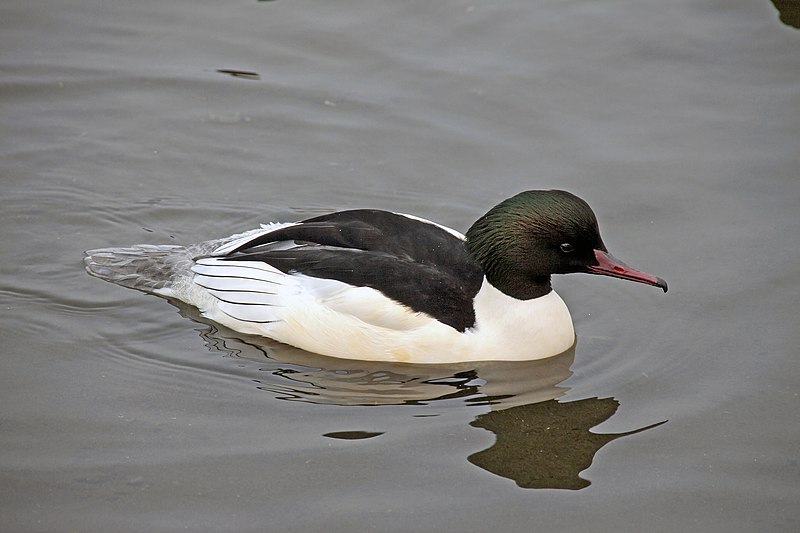
The Common merganser, also known as the goosander in Eurasia, is a notable seaduck found in river and lake habitats of forested regions across Europe, Asia, and North America.
This large bird primarily feeds on fish and is known for nesting in tree holes. Carl Linnaeus first described it in 1758 in the 10th edition of his Systema Naturae.
With its distinctive appearance and adaptability, the Common merganser is a fascinating species that has captured the attention of bird watchers and ornithologists alike.
Scientific classification:
| Kingdom | Animalia |
| Phylum | Chordata |
| Class | Aves |
| Order | Anseriformes |
| Family | Anatidae |
| Genus | Mergus |
| Species | M. merganser |
Also Featured In: Flight Birds You Should Know, Most Common Lake Birds
11. Red-Shouldered Hawk
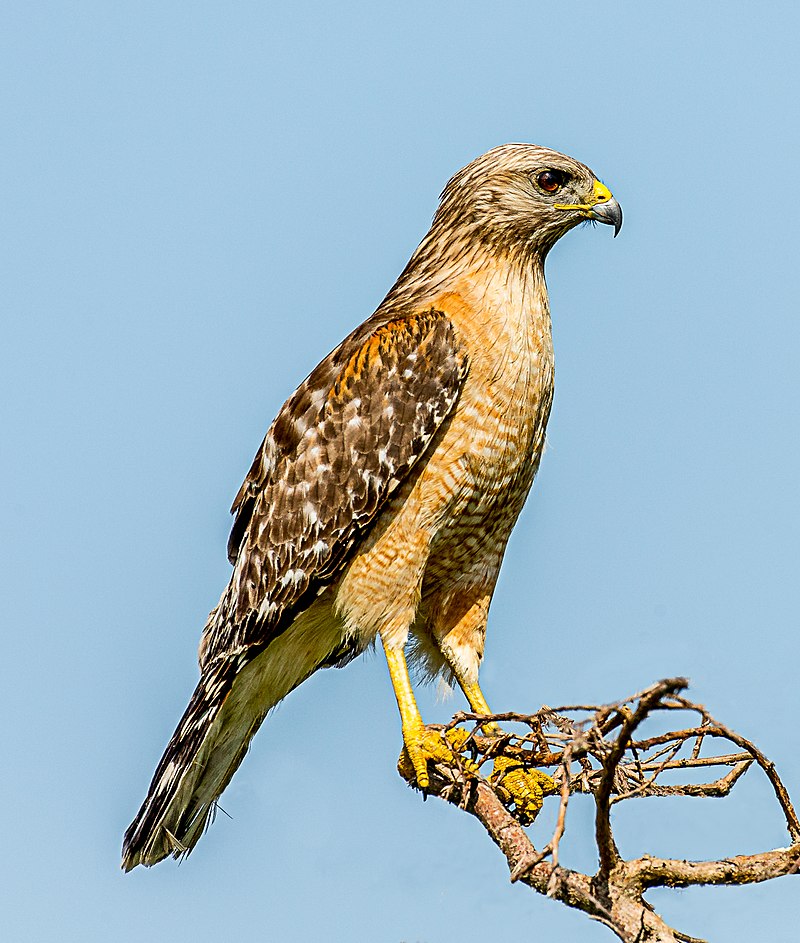
The red-shouldered hawk, also known as Buteo lineatus, is a medium-sized bird of prey found in eastern North America and along the coast of California and northern to northeastern-central Mexico.
While many of these hawks are permanent residents within their range, northern populations migrate, most travelling to central Mexico.
The species faces numerous threats to its survival, with deforestation being a primary issue.
Despite their many challenges, these birds are an important part of their ecosystems, primarily feeding on rodents, small mammals, and amphibians.
In addition to their hunting capabilities, these hawks are known for their striking appearance, featuring reddish brown shoulder feathers and bold black and white striped wings.
Overall, the red-shouldered hawk is a fascinating and important bird that plays a vital role in its surroundings.
Scientific classification:
| Kingdom | Animalia |
| Phylum | Chordata |
| Class | Aves |
| Order | Accipitriformes |
| Family | Accipitridae |
| Genus | Buteo |
| Species | B. lineatus |
Also Featured In: Birds Commonly Found in New York, Birds Live in Arkansas
Conclusion
Northern California is home to various bird species, each adapted to its unique habitat and climate.
From the majestic Bald Eagle soaring in the northern wilderness to the cheerful Western Bluebird found in suburban gardens, this region offers bird enthusiasts a rich tapestry of avian life to discover and appreciate.
Whether you’re exploring the coastal cliffs, the lush redwood forests, or the vast wetlands, you’re likely to encounter some of these common birds, showcasing the ecological diversity of Northern California.
Birdwatching in this area is not only a delightful pastime but also an opportunity to connect with the natural beauty of this picturesque region.